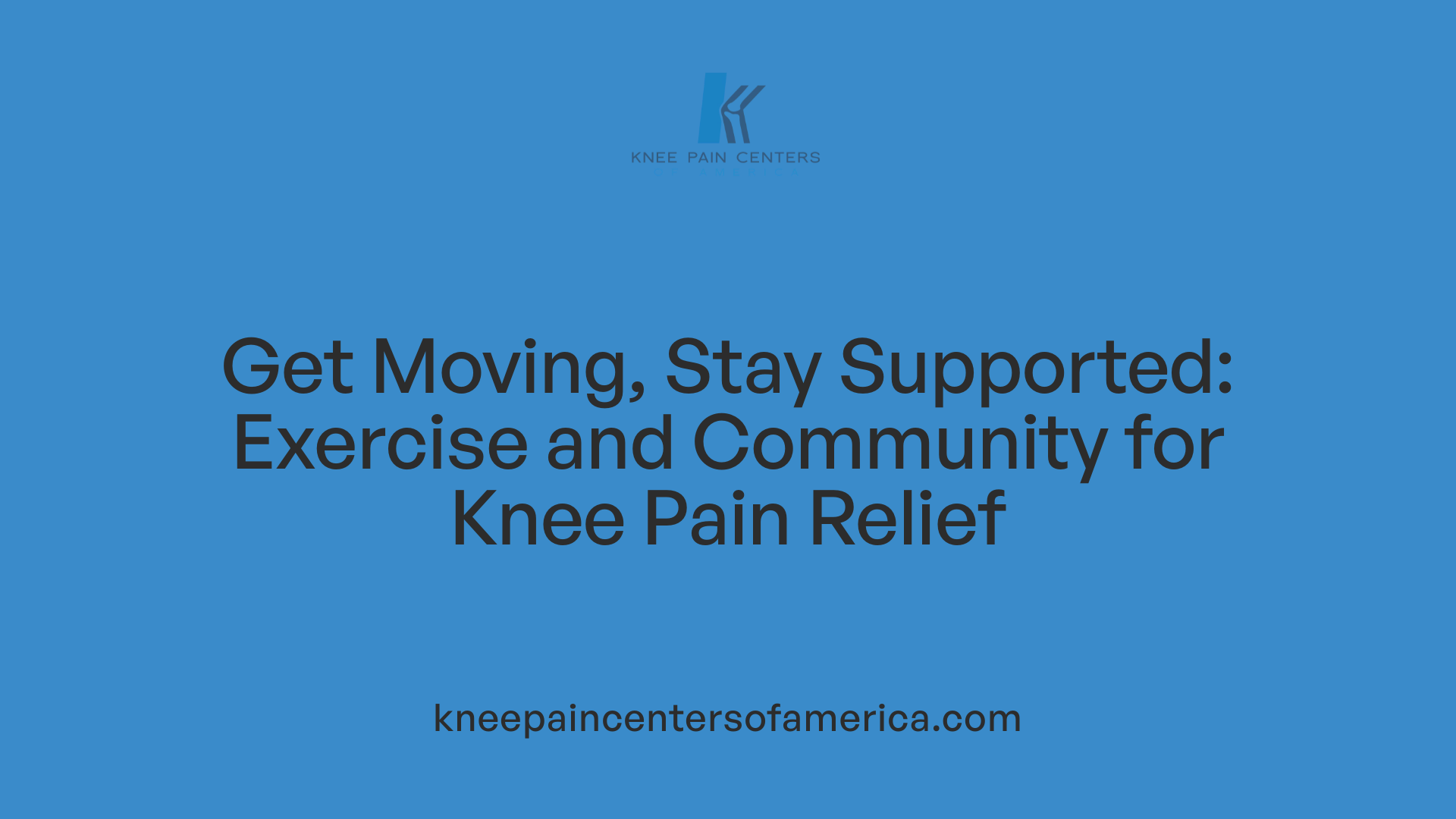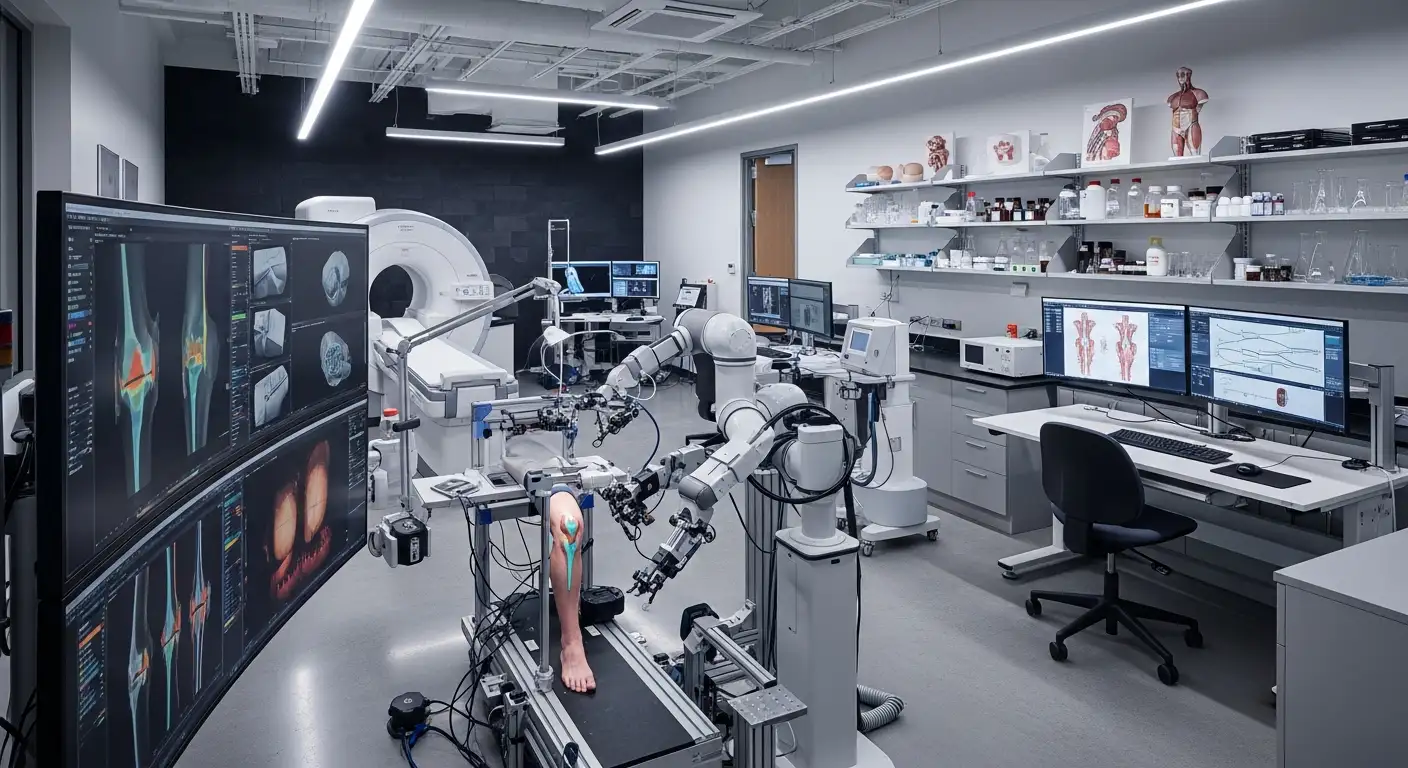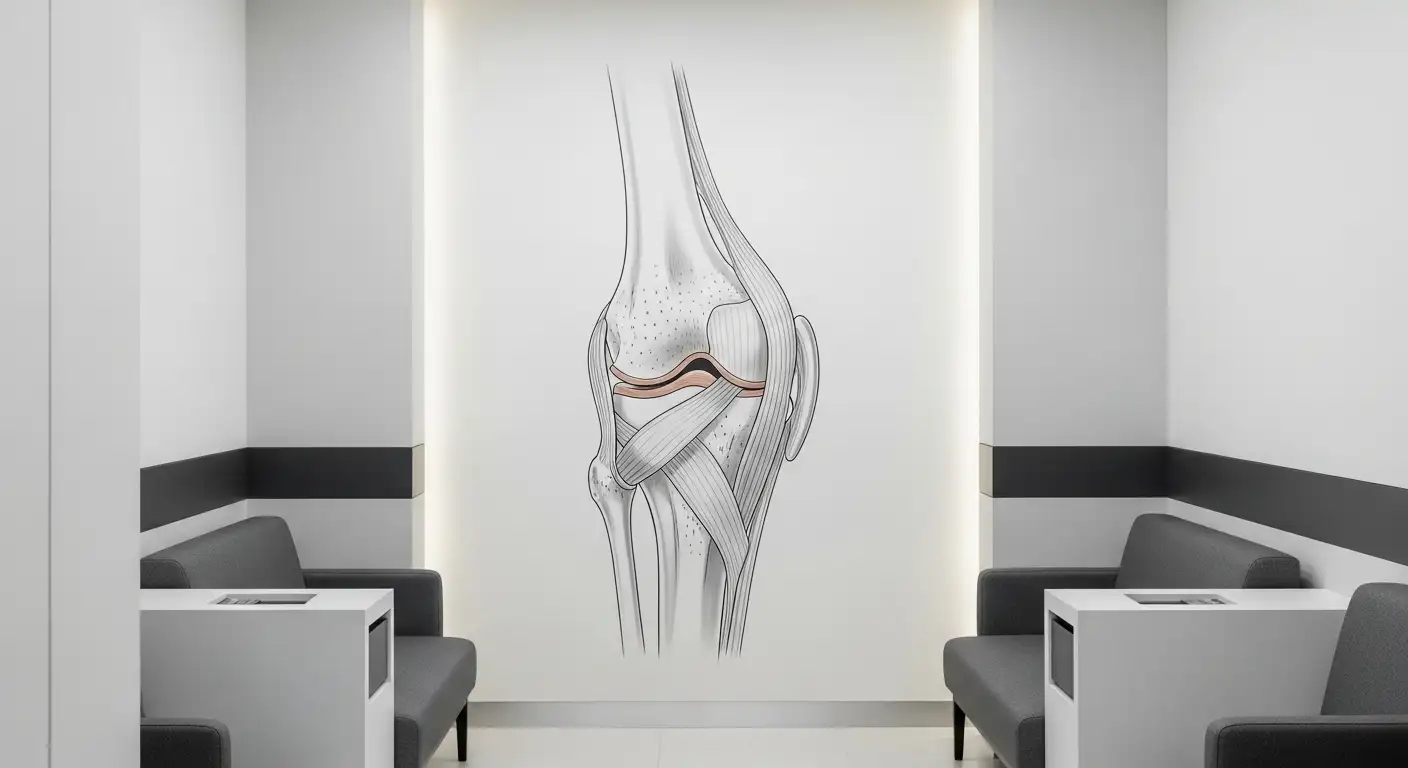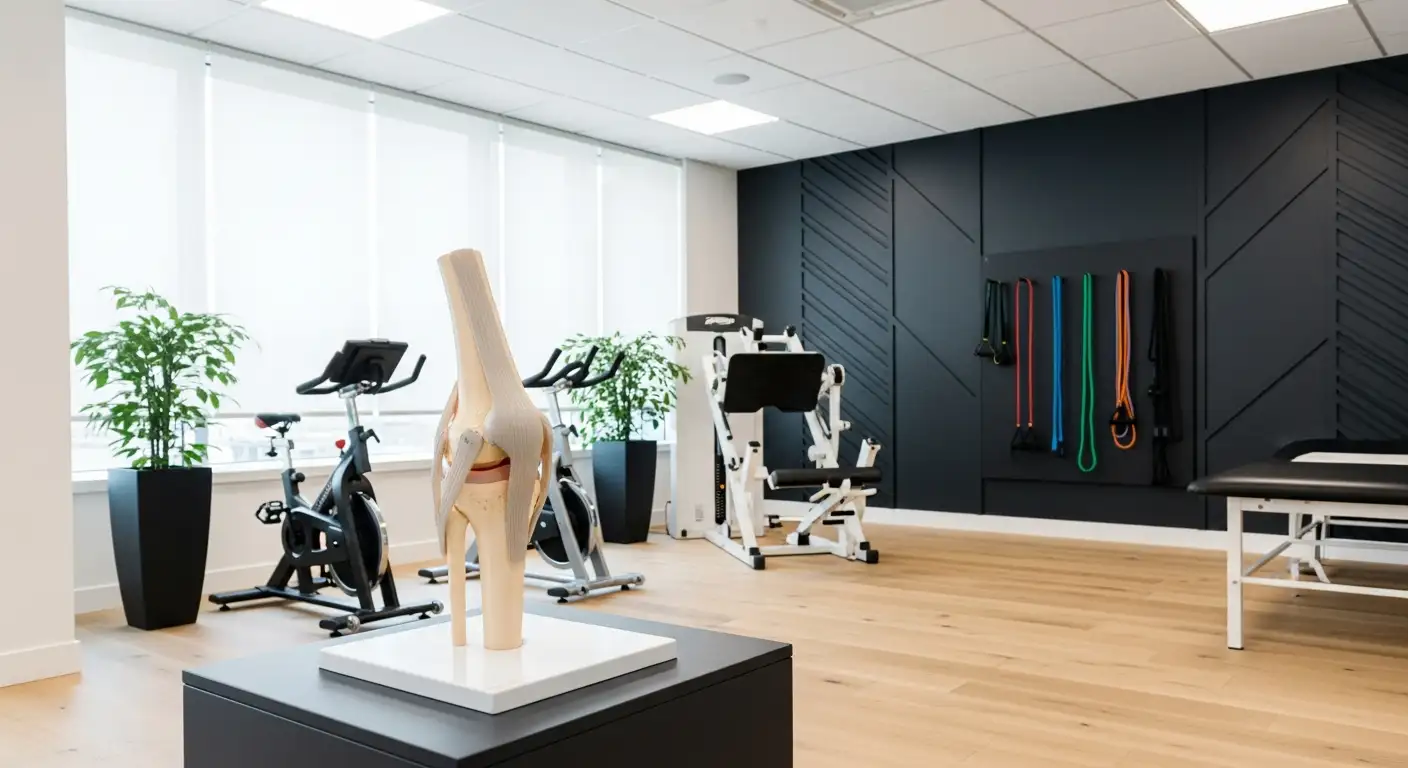Facing Knee Osteoarthritis Together
Living with knee osteoarthritis can be challenging, impacting daily activities and quality of life. Support groups dedicated to knee pain provide patients with education, motivation, and community, empowering them to manage their condition more effectively and improve their well-being.
Comprehensive Understanding and Diagnosis Through Group Empowerment

How is osteoarthritis in the knee diagnosed?
Osteoarthritis in the knee is diagnosed mainly through a comprehensive clinical evaluation and imaging techniques. Initially, healthcare professionals take a detailed patient history to understand symptoms like pain, stiffness, and swelling. A physical examination follows to assess joint movement, tenderness, and signs of inflammation.
Imaging studies are crucial for confirming the diagnosis. X-rays are commonly used to detect joint space narrowing, bone spurs, and cartilage deterioration that characterize knee osteoarthritis. In more complex cases, an MRI may be conducted to obtain detailed views of soft tissues, cartilage, and bone structure.
Laboratory tests are not typically used for diagnosing osteoarthritis but help exclude other causes such as inflammatory or infectious arthritis.
Importance of clinical assessment and imaging
Clinical assessment remains the foundational step in understanding the severity and functional impact of knee osteoarthritis. Imaging complements this by providing visible evidence of joint degeneration, which guides treatment decisions.
Together, these approaches ensure a precise diagnosis and help tailor effective treatment plans that often include exercise therapy and patient education.
Role of patient education in diagnosis comprehension
Educating patients about the nature of knee osteoarthritis empowers them to engage actively in their care. Although education alone may produce modest improvements, when combined with exercise therapy, it enhances symptom management and function.
Patient groups and educational interventions help individuals understand their diagnosis, treatment options, and self-management strategies, fostering better outcomes and adherence to treatment plans.
Enhancing Management Through Non-Surgical Treatments and Lifestyle Changes

What non-surgical treatments are effective for managing knee osteoarthritis?
Non-surgical management of knee osteoarthritis (KOA) includes a variety of approaches aimed at reducing pain, improving function, and slowing disease progression. Physical therapy is a cornerstone treatment, focusing on exercises that strengthen the quadriceps and other muscles around the knee to enhance joint stability and reduce stress on affected structures. Low-impact aerobic exercises like swimming, cycling, and walking improve cardiovascular health while minimizing joint load.
Medications such as nonsteroidal anti-inflammatory drugs (NSAIDs) and topical creams provide symptom relief by decreasing inflammation and pain. Injections, including corticosteroids and hyaluronic acid, offer temporary relief by reducing inflammation and lubricating the joint surface, although they do not alter disease progression.
Supportive devices like knee braces provide stability, reduce swelling through compression, and can mimic ligament function to prevent further injury. Orthotic footwear and walking aids also help redistribute forces, improving comfort and mobility. Alternative therapies such as acupuncture may be used adjunctively, although scientific evidence remains limited.
How do lifestyle modifications contribute to the management of knee osteoarthritis?
Lifestyle changes are fundamental in managing KOA by reducing mechanical stress on the joints and supporting overall health. Maintaining a healthy body weight is critical since each additional pound can add roughly four pounds of pressure on knee joints, exacerbating cartilage wear and pain.
Engagement in regular low-impact exercise enhances joint flexibility, strengthens muscles, and improves balance, all helping to reduce stiffness and discomfort. Nutritional strategies emphasize anti-inflammatory foods, although supplements like glucosamine and chondroitin show mixed results.
Stress management, proper sleep, and participation in community-based exercise programs contribute positively to mental health and physical function. These modifications not only alleviate symptoms but can also reduce the need for more invasive interventions.
Combining therapies for comprehensive care
The integration of non-surgical treatments and lifestyle adaptations creates a personalized management plan tailored to the individual's condition and preferences. Coordinated approaches ensure that physical therapy, medication, exercise, diet, and use of supportive devices work synergistically for optimal symptom relief and joint preservation.
The Role of Exercise and Community Support in Symptom Relief

Types of exercises beneficial for knee osteoarthritis
Exercise is fundamental in managing knee osteoarthritis (KOA), with various modalities offering distinct benefits. Aerobic exercises such as walking, cycling, and swimming improve cartilage quality, reduce pain, and enhance overall physical function. Strength training focusing on the quadriceps alleviates muscle weakness, improves joint stability, and helps prevent disease progression. Neuromuscular and proprioception exercises promote better joint control and balance, reducing injury risk. Aquatic exercises leverage buoyancy to relieve joint pressure and assist with pain relief, making them especially suitable for individuals experiencing joint discomfort.
Group exercise advantages including motivation and adherence
Participating in exercise groups offers more than physical benefits; it fosters motivation, supports adherence to exercise routines, and enhances patient engagement. Community-based exercise classes encourage social support, accountability, and shared experience, which are crucial in maintaining consistent intervention and improving long-term outcomes. Group settings provide a supportive environment where individuals can learn from each other and sustain enthusiasm for ongoing KOA management.
Psychological and functional benefits of traditional exercises like Tai Chi
Traditional Chinese exercises such as Tai Chi, Ba Duanjin, Wuqinxi, and Yoga hold therapeutic value beyond physical improvements. These practices alleviate pain and stiffness while enhancing balance, muscular function, and psychological well-being. They are particularly effective in reducing anxiety and depression commonly associated with chronic conditions like KOA. By combining gentle movements with mindfulness, these exercises improve patients' quality of life and encourage holistic health management.
Importance of personalized exercise regimens
Since KOA manifests differently among patients, tailoring exercise programs to individual needs is essential. Personalized regimens optimize efficacy by considering disease stage, physical capabilities, and patient preferences. Health professionals play a central role in guiding patients to combine appropriate modalities—such as aerobic, strength, and balance exercises—for a comprehensive approach. Future directions emphasize developing adaptable plans that evolve with patient progress, maximizing symptom relief and functional restoration while minimizing risks.
| Exercise Type | Benefits | Additional Notes |
|---|---|---|
| Aerobic (walking, cycling) | Enhances cartilage, reduces pain, improves cardiovascular health | Recommended 150 minutes weekly of moderate intensity |
| Strength Training | Improves muscle strength, joint stability, slows progression | Focus on quadriceps for knee OA |
| Aquatic Exercise | Relieves joint pressure, supports pain relief, improves function | Suitable for those with significant joint discomfort |
| Traditional Exercises | Reduces pain/stiffness, improves balance and mental health | Includes Tai Chi, Yoga; integrates mindfulness |
| Neuromuscular Training | Enhances proprioception and balance | Helps prevent falls and injuries |
Support Groups as a Platform for Knowledge and Pain Management Strategies
Education about new medical treatments and interventions
Support groups offer a valuable setting for patients to learn about the latest advancements in knee pain management. Recent medical treatments include minimally invasive procedures such as genicular artery embolization (GAE) and knee embolization. These target inflammation by restricting blood flow to affected areas, offering significant and lasting pain relief.
Innovative devices like the MISHA Knee System function as implantable shock absorbers that reduce joint load, which can delay or reduce the need for full knee replacement surgery. Support groups help demystify these options, providing patients with a clearer understanding of how new technologies and regenerative therapies—such as autologous chondrocyte implantation, platelet-rich plasma (PRP), and stem cell treatments—can support cartilage repair and pain control.
Information on medications, injections, and complementary therapies
Patients also exchange information about medications, from over-the-counter NSAIDs and acetaminophen to steroid and hyaluronic acid injections. These treatments help reduce inflammation and lubricate the joint, providing symptom relief.
Complementary therapies discussed include acupuncture, balneotherapy, and transcutaneous electrical nerve stimulation (TENS), which some patients find beneficial for pain and function. While these approaches vary in scientific evidence, support groups provide a platform to share experiences and assess their suitability alongside other treatments.
Sharing experiences with advanced therapies and non-invasive options
Members benefit greatly from hearing real-world accounts of advanced therapies such as radiofrequency ablation and the use of knee braces designed to improve joint stability and reduce discomfort. Non-invasive treatments hold the appeal of daily usability without surgery, and personal stories can guide others in making informed choices.
Encouragement to seek professional guidance and combine treatments
Support groups emphasize the importance of working closely with healthcare professionals to create personalized management plans. Combining exercise, education, medications, complementary approaches, and assistive devices provides the best outcomes. Encouraging patients to seek expert advice ensures that treatments align safely with their individual health and lifestyle.
Through collective knowledge and shared experiences, support groups empower patients to navigate the evolving landscape of knee pain management effectively.
When Support Groups Can Help in Surgical Decision Making and Future Therapies
When is knee replacement surgery recommended for osteoarthritis patients?
Knee replacement surgery, such as total knee arthroplasty (TKA), is generally advised when osteoarthritis leads to severe knee pain and significant loss of function. This usually happens after conservative treatments—including medications, physical therapy, bracing, and injections—fail to provide relief. Surgery is considered when joint cartilage has been extensively damaged, diminishing quality of life through persistent symptoms and impaired mobility. Selecting the right candidates for surgery is crucial, as TKA offers pain relief and improved joint function primarily for advanced-stage patients. Thus, surgery serves as a last resort when the benefits outweigh the possible risks.
How do support groups assist patients emotionally and mentally before surgery?
Support groups play a vital role in preparing patients both emotionally and mentally for surgery. They offer a community environment where individuals can share experiences, fears, and expectations, reducing feelings of isolation. Through education and peer encouragement, patients gain better insight into the surgical process, recovery timelines, and post-surgery lifestyle changes. This support helps to alleviate anxiety, build confidence, and promote positive mental health—factors that significantly influence surgical outcomes.
What emerging therapies offer hope for future osteoarthritis treatment?
The landscape of osteoarthritis treatment is evolving with exciting new therapies under development. Regenerative approaches, including stem cell and gene therapies, aim to repair damaged tissue and slow disease progression. Biologics targeting inflammation and novel pathways involving circadian rhythms and glial cells show promise for precision medicine. Large genetic studies have exposed numerous drug-targeted genes, paving the way for personalized treatments and drug repurposing. These innovations herald a shift towards disease-modifying strategies instead of merely symptom control.
How do community discussions about clinical advancements benefit patients?
Community conversations about advances in osteoarthritis treatments create an informed patient population that is empowered to engage actively in managing their condition. These discussions foster awareness of personalized care options tailored to a patient’s disease stage and health status. They also encourage participation in clinical trials and adoption of newer therapies as they emerge, potentially improving long-term outcomes. Support groups and healthcare providers collaborating in these dialogues can improve patient education and satisfaction.
| Topic | Details | Patient Benefit |
|---|---|---|
| Surgery Criteria | Recommended after failure of conservative treatments and severe joint damage | Pain relief and improved mobility |
| Support Groups Role | Emotional support, education, preparation for surgery | Reduced anxiety, increased confidence |
| Emerging Therapies | Stem cell therapy, gene therapy, biologics, and personalized medicine | Potential for joint repair and disease modification |
| Community Discussions | Sharing clinical updates and personalized care strategies | Informed decisions and engagement with treatment |
Building Strength and Community for Knee Health
Knee pain support groups offer far more than emotional comfort — they provide essential education, encouragement for lifestyle changes, and shared experiences with both traditional and cutting-edge treatments. By connecting patients with resources and each other, these groups enhance symptom management, improve quality of life, and empower individuals to navigate decisions about their knee health, including surgery and innovative therapies. For those facing knee osteoarthritis, joining a support group can be a vital step toward long-term joint health and wellness.
References
- Benefits and Mechanisms of Exercise Training for Knee ...
- Benefits of Exercise for Osteoarthritis
- The Advantages of Knee Braces for Arthritis Patients
- Patient education improves pain and function in people ...
- Effective Knee Arthritis Treatment Without Surgery for Pain Relief
- Alternative Therapies for Joint Pain: Non-Surgical Treatments
- Treatment and support Osteoarthritis
- Osteoarthritis - Diagnosis & treatment
- Osteoarthritis: Diagnosis and Treatment




